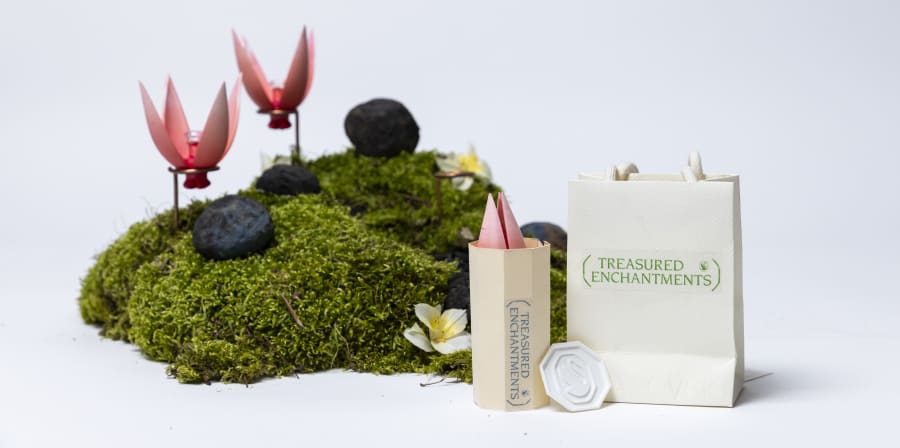
How can we radically use living systems as a driver for planet-positive innovation?
Thirty four MA Biodesign students worked with Swarovski to address this question and explore answers to the complex crisis of material scarcity and ecosystems extinction. First and second year students collaborated in interdisciplinary groups alongside designers and scientists from the MA Biodesign course team and developed innovative design solutions, systems and products focussed on Swarovski's 3 planet-conscious pillars: waste and circularity, conscious materials and greenhouse gas emissions.
Swarovski’s longstanding initiative with Central Saint Martins forms part of its commitment to empowerment and education, where it continues to support global academic institutions annually, sharing expert knowledge on sustainability, encouraging innovative thinking, and donating reignited crystals, which are crystal stock that would otherwise go to waste.
Swarovski believes that through education it can inspire individuals to make more conscious decisions and follow their boldest dreams.
Treasured Enchantments
Chrisopher Bellamy, Pamela Pan, Paul Treichl
A product discovery experience created, and inspired, by nature.
The winning team - Christopher Bellamy, Pamela Pan and Paul Treichl, with the support of their second-years mentors Mathilde Wittock and Giulia Bartole - developed ‘Treasured Enchantments’ a product discovery experience, created and inspired by nature, which extends the magic of Swarovski from its jewellery to the packaging and the store.
The proposal materialised two packaging solutions, ‘bio rock’ and ‘flower ceremony’, involving an integration of biofabrication techniques, mycelium-based composites, bacteria bio-mineralisation, and bio-based iridescent CNC (cellulose nanocrystal) coatings. The circular design approach uses various waste streams and ensures the materials remain biodegradable. Through an ‘unboxing’ ceremony, the customer experiences the magic of nature, creating a long-lasting appreciation of the jewellery.
The winning team was awarded a £1000 cash prize and the opportunity for Swarovski to purchase the IP rights for the innovation.
-
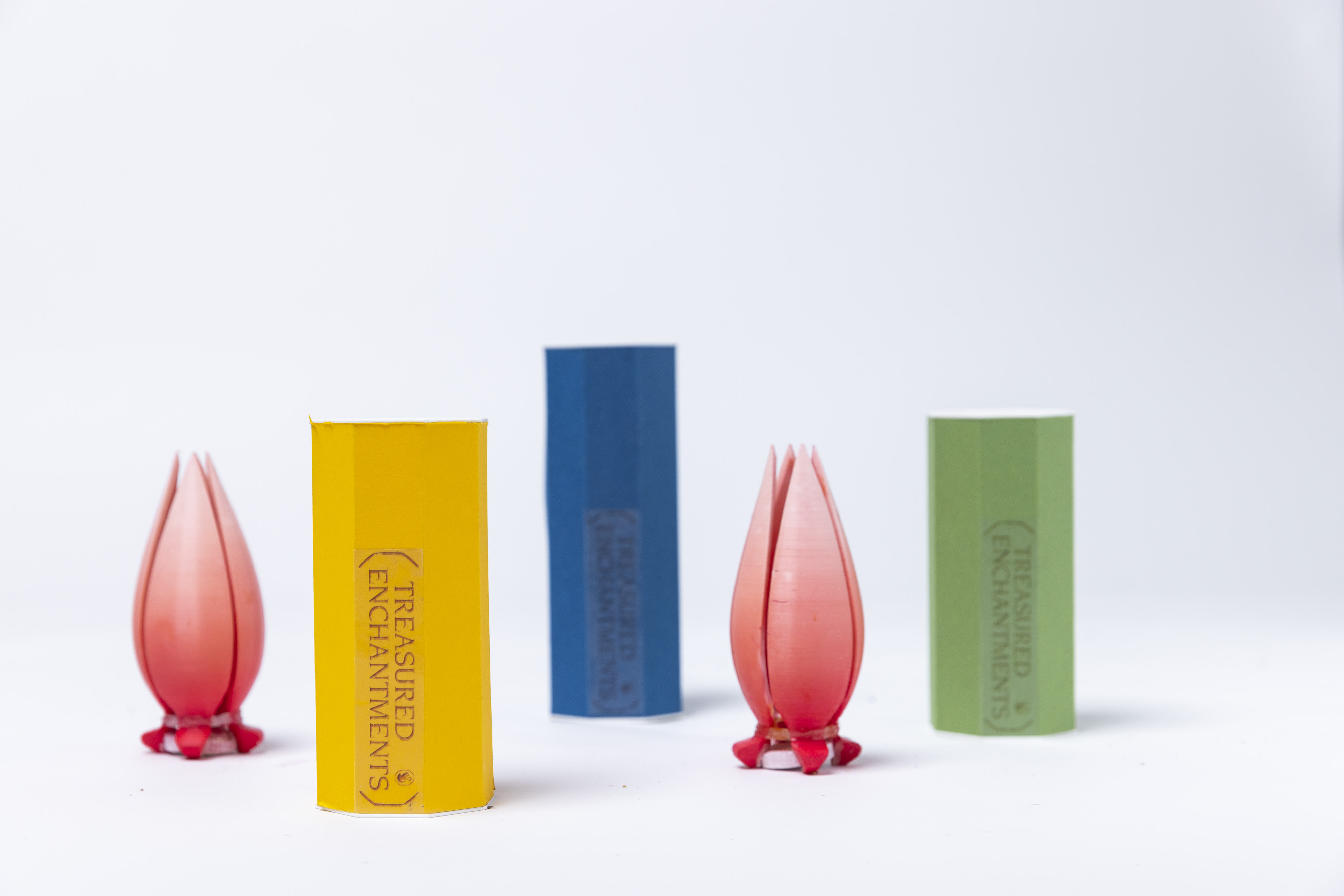
Work for the Swarovski x MA Biodesign project with Central Saint Martins
-
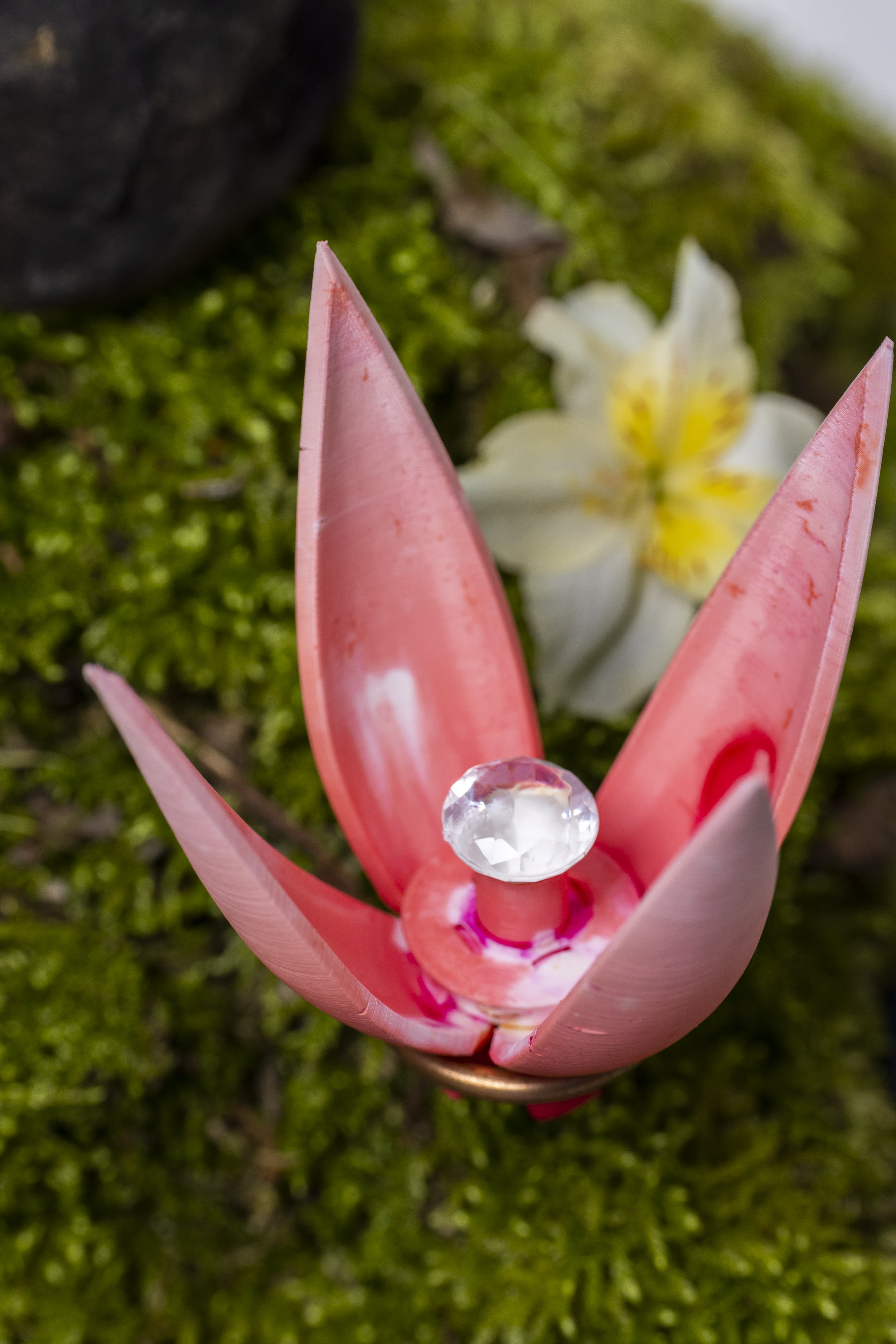
Work for the Swarovski x MA Biodesign project, Treasured Enchantments
-
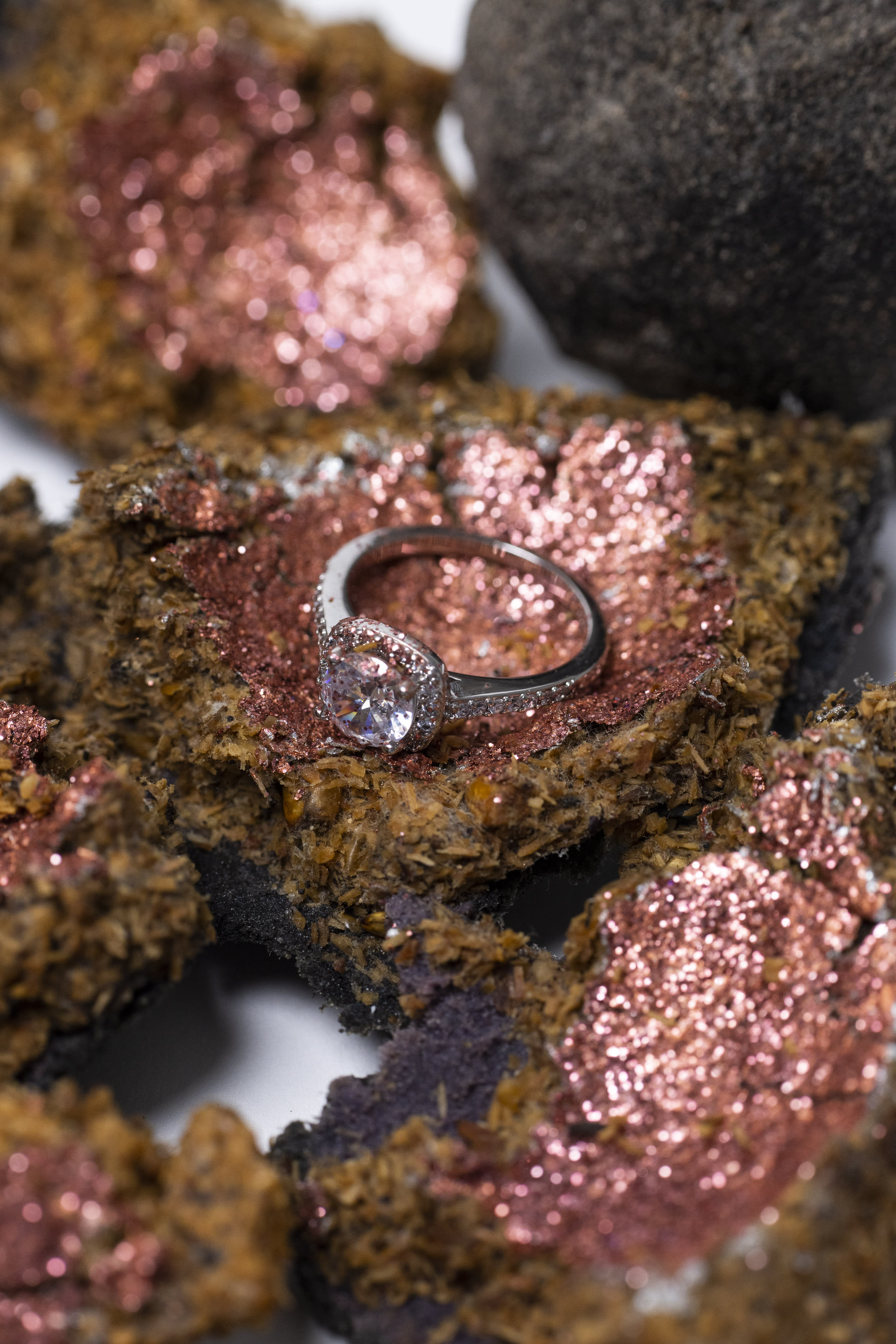
Treasured Enchantments, work for Swarovski x MA Biodesign project
-
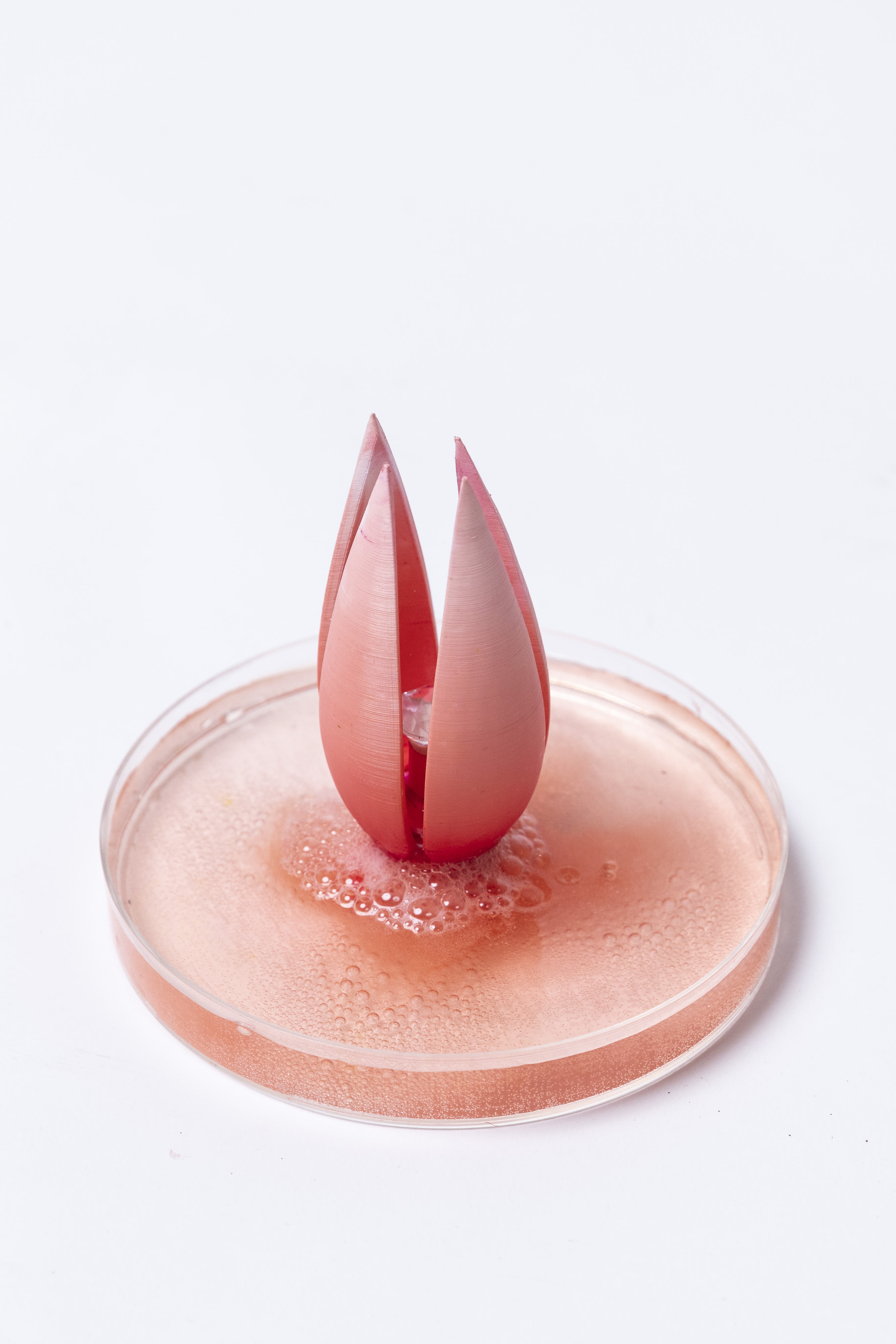
Treasured Enchantments, work for Swarovski x MA Biodesign project
-
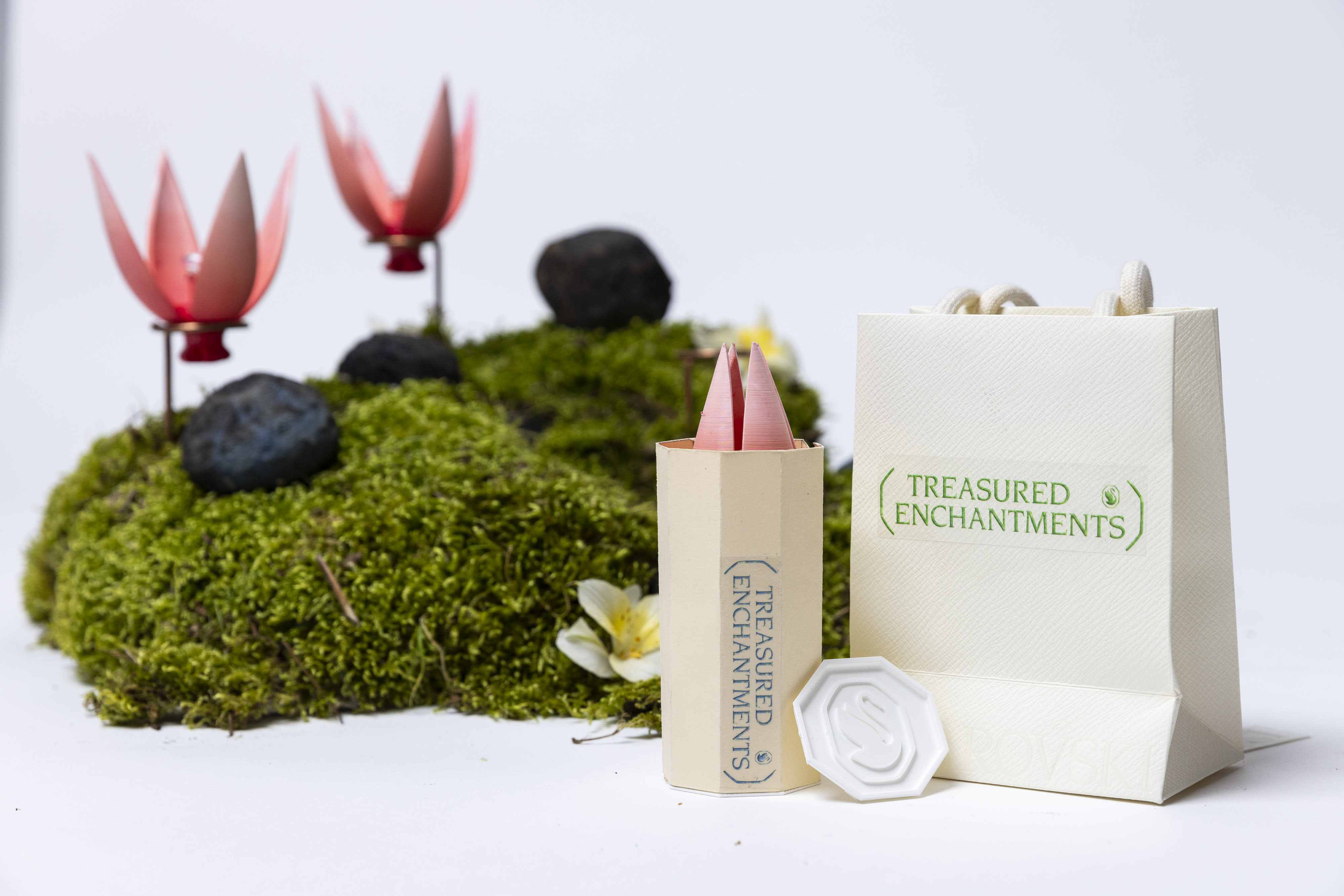
Treasured Enchantments, work for Swarovski x MA Biodesign project
Bioabsorbent orbs
Jinghan Li, Chloe Johnson, Laura Robens
What if we bring Swarovski Waterschool to London?
'Bioabsorbent orbs' explored ways to bring Swarovski's Waterschool into stores. The project proposed that local waste materials, such as fruit peels and oyster shells, could be transformed into bioabsorbent powders which could act as biofilters, making unsafe water pure enough for agricultural use. Using these powders alongside colourful diatoms (single celled algae), the group created designs for an installation that could be placed in Swarovski stores. The installation would be accompanied by an activity sheet, aimed at teenagers, encouraging experimentation with this simplified water filtration method to raise awareness of how natural waste can be used to aid in the treatment of polluted water.
-
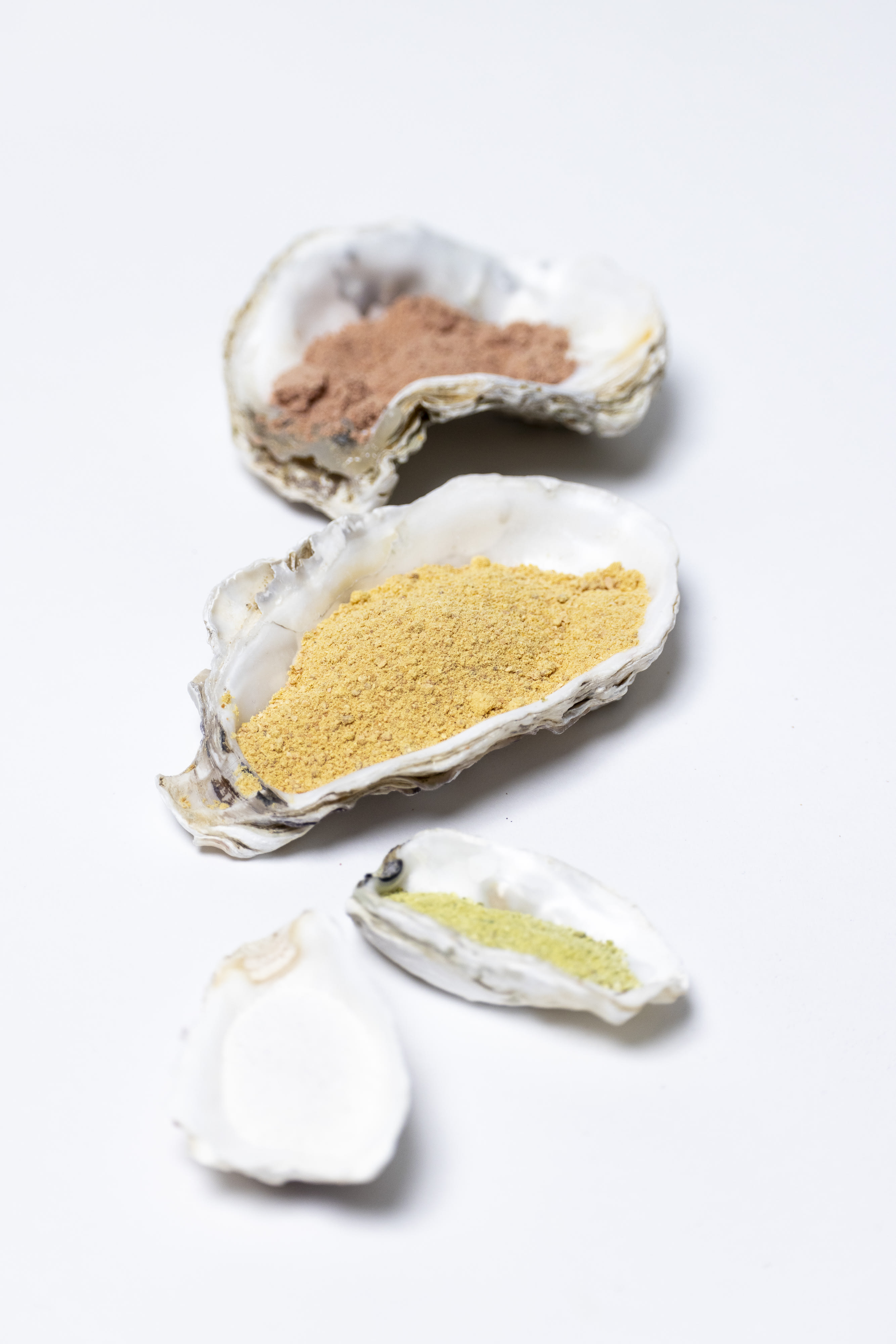
Bioabsorbent Orbs, Swarovski x MA Biodesign
-
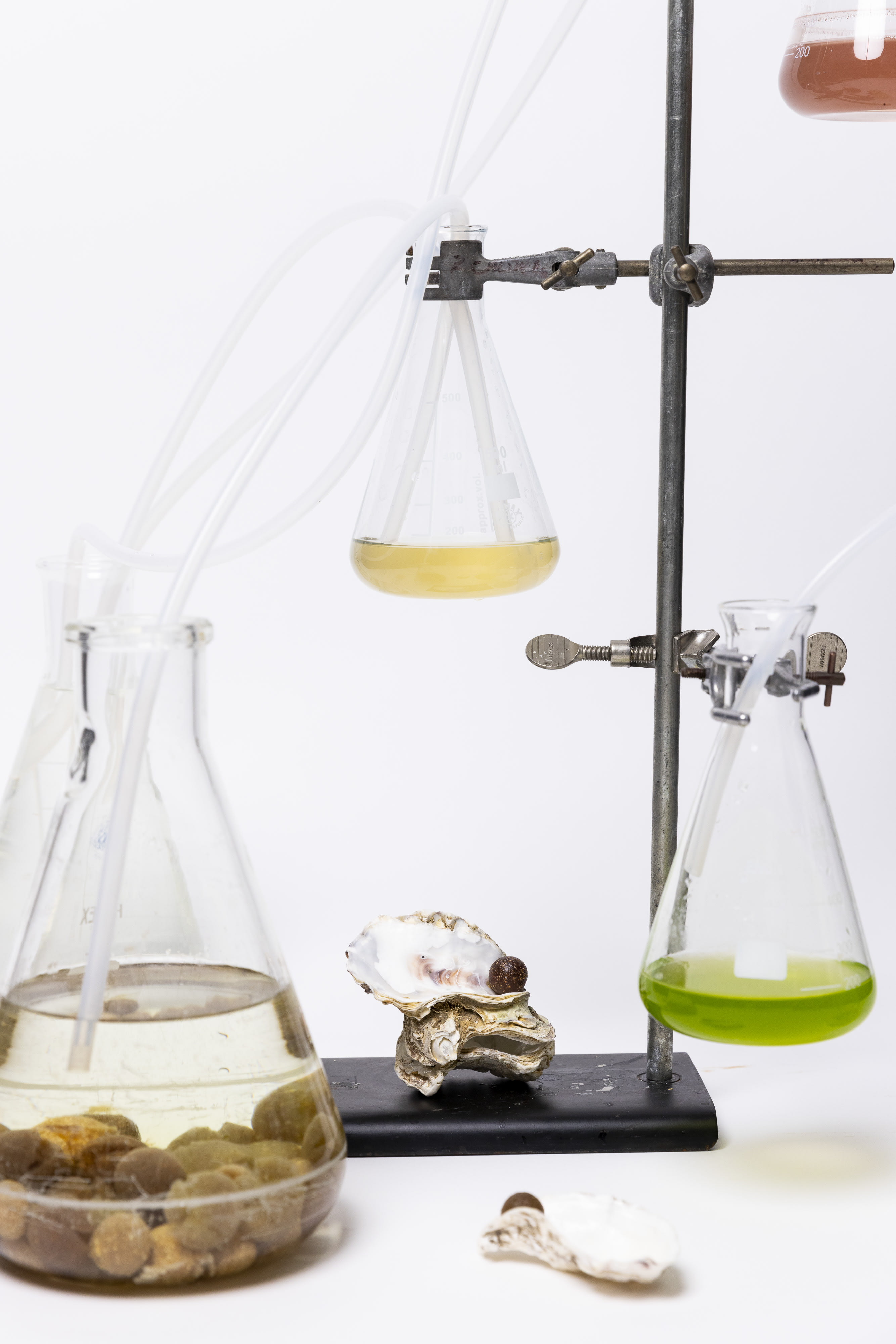
Bioabsorbent Orbs, Swarovski x MA Biodesign
-
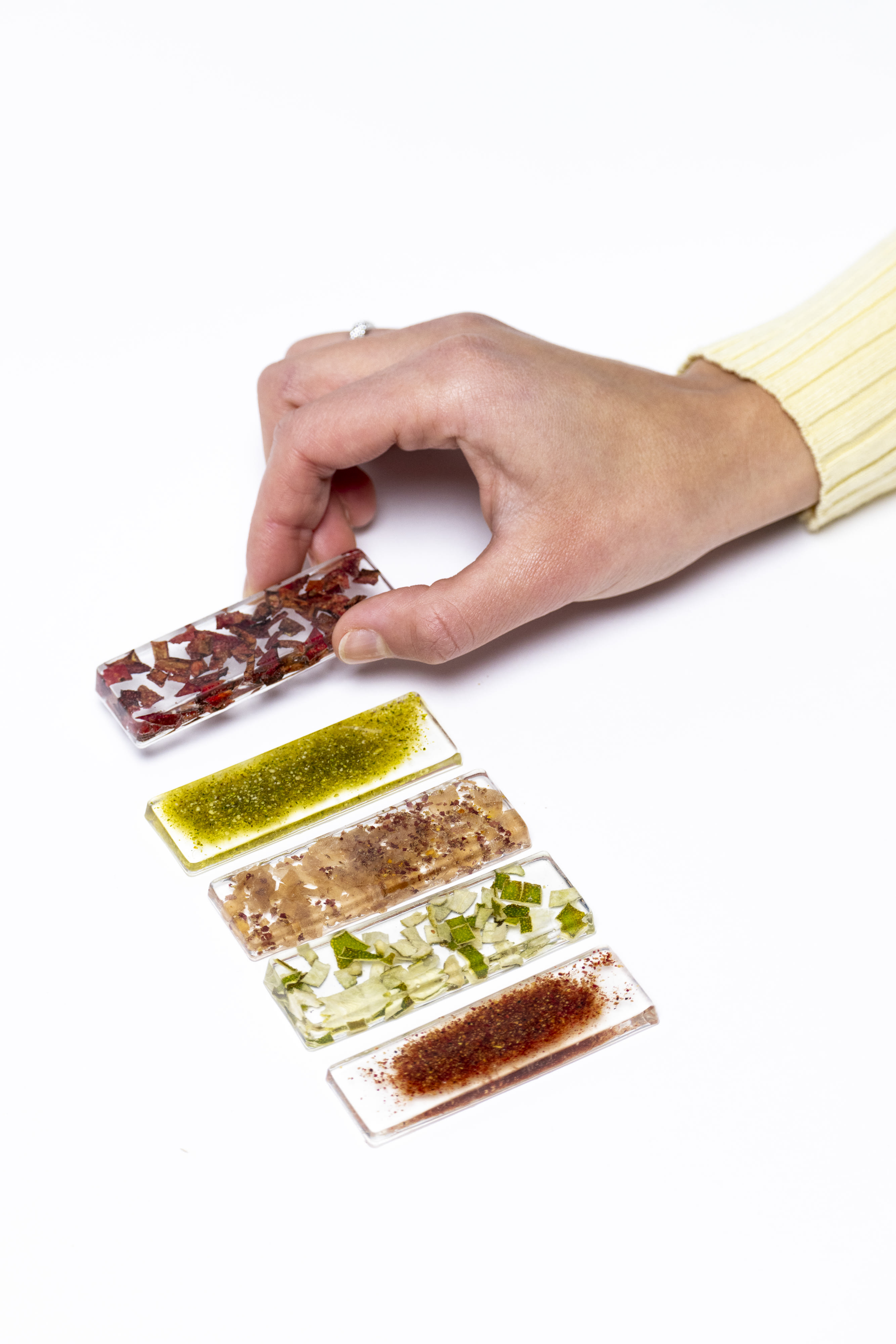
Bioabsorbent Orbs, Swarovski x MA Biodesign
-
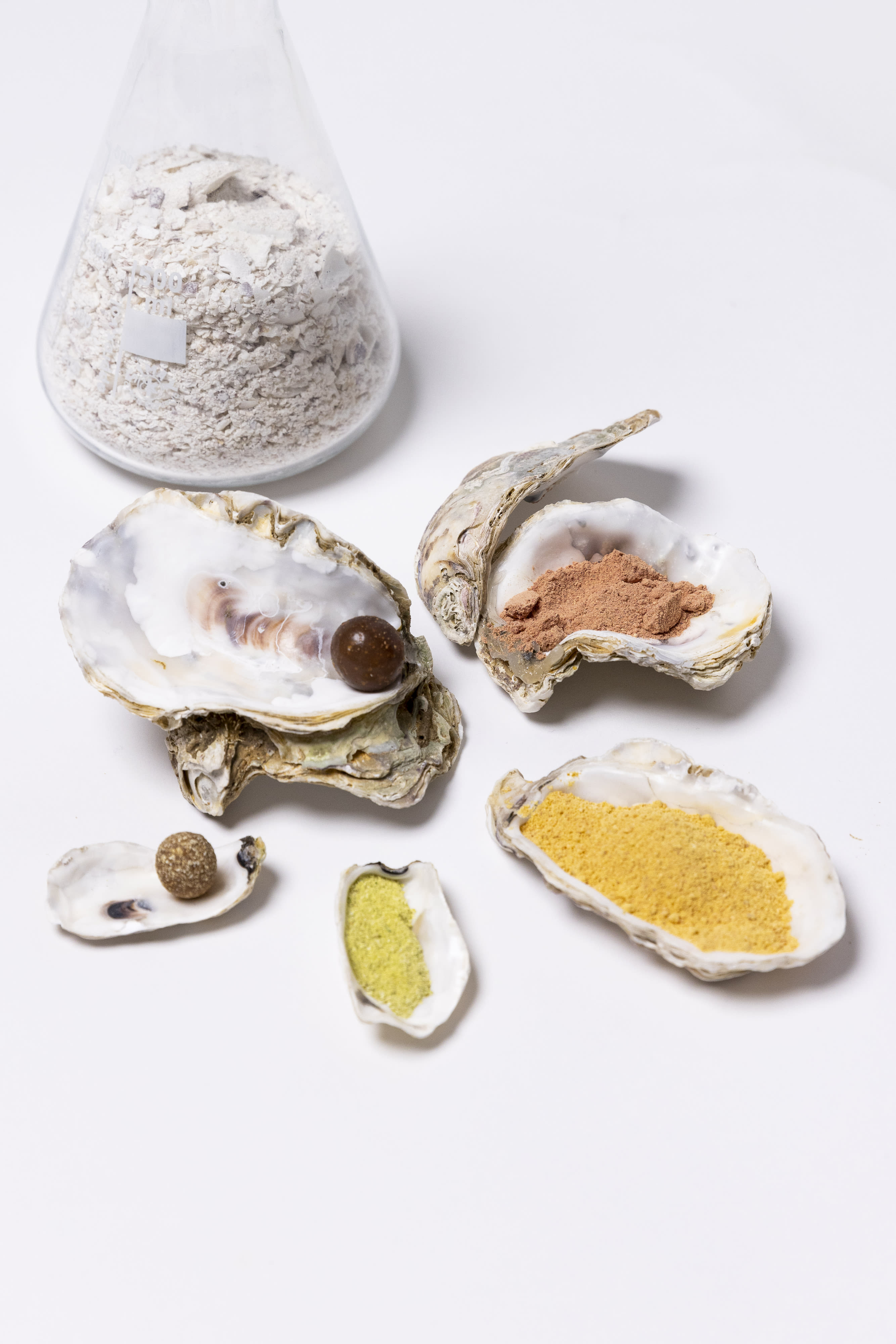
Work by Group 1 for the Swarovski project, oyster shells laid out with powder inside
Filtering future
Sophia Heywood, Tipaponr Tharawongthawat, Digby Usher
How might we rethink the future of water filtration?
Prickly Pear cacti are considered an invasive species in many regions of the world, particularly in Switzerland where they are reported to cover an area equal to the size of Paris. 'Filtering future' investigated ways that these plants could be used in an environmentally safe way to filter water, with waste materials being repurposed to create glasses and bottles that could be purchased. The team proposed that proceeds from the sale of these items would go to Swarovski's Waterschools charity.
-
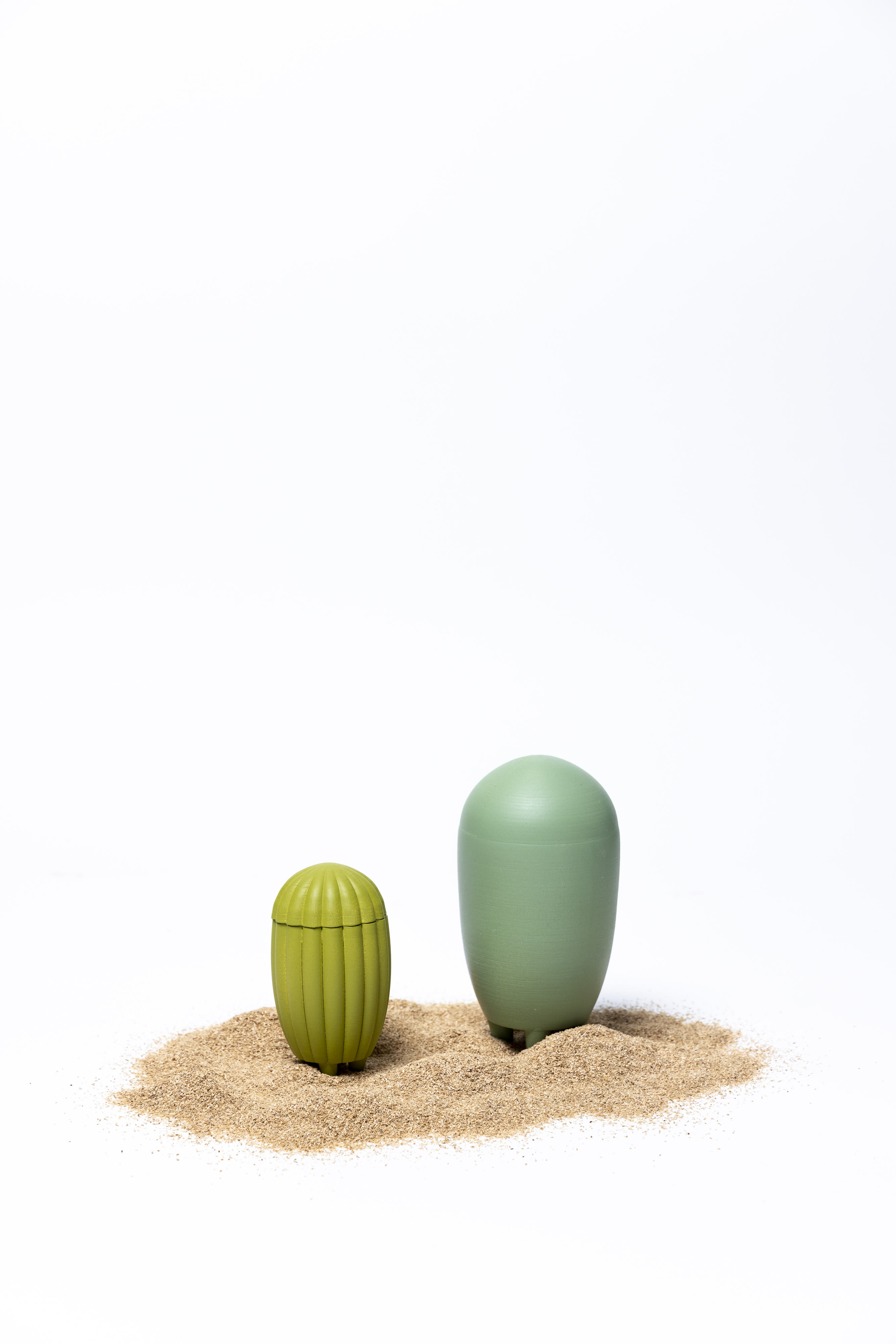
Filtering future, work for the Swarovski x MA Biodesign project
-
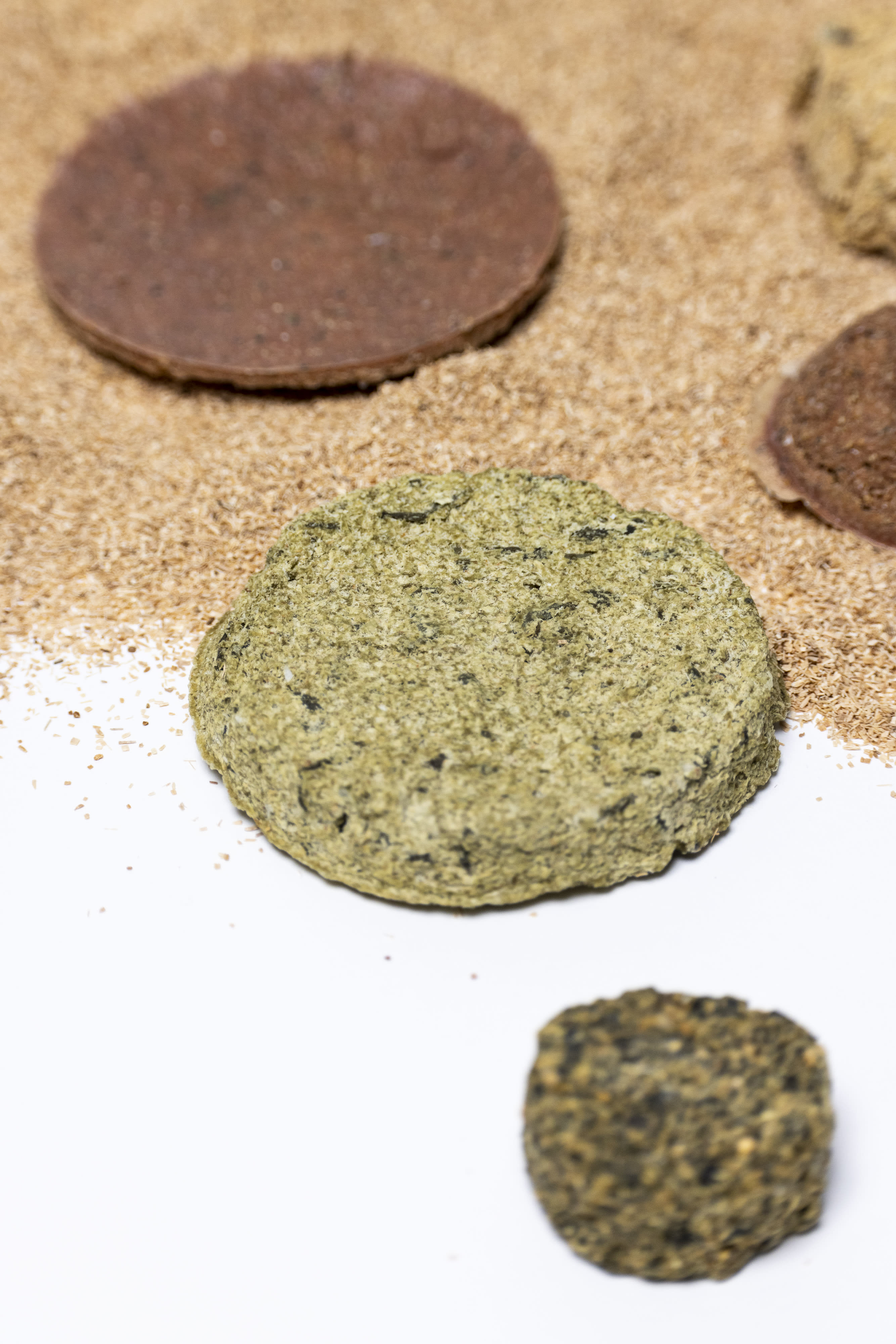
Filtering future, Swarovski x MA Biodesign
-
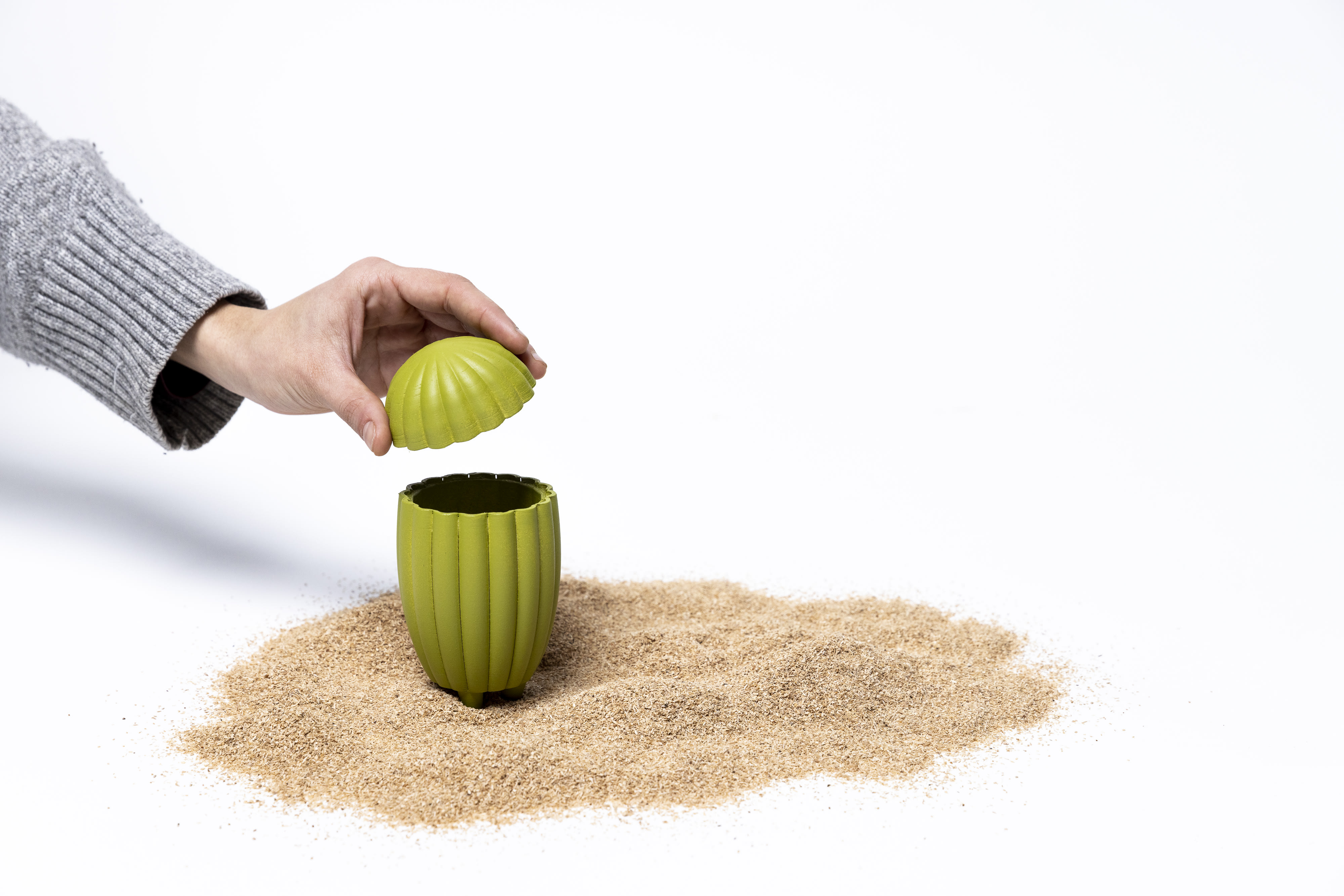
Filtering future, Swarovski x MA Biodesign
-
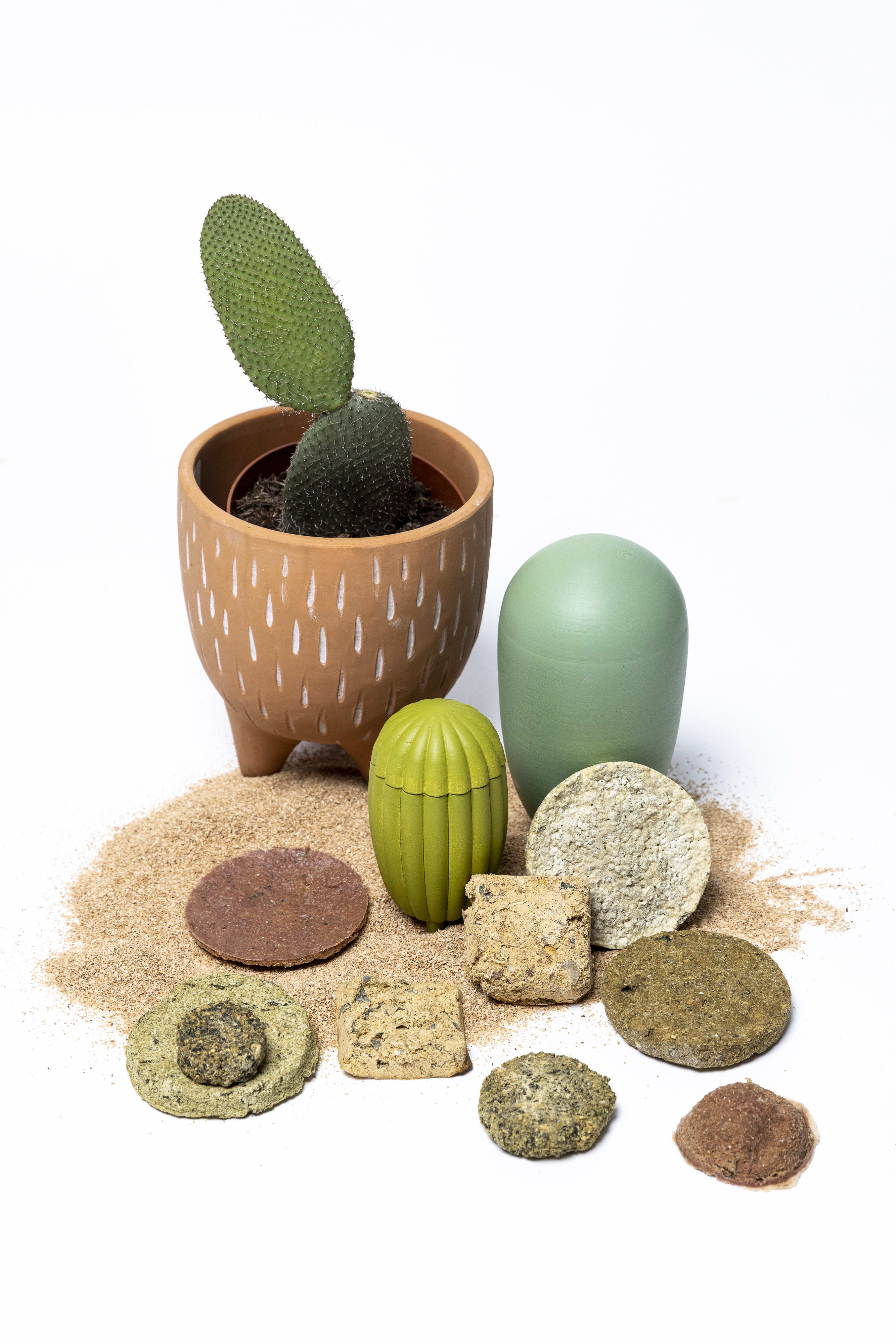
Work for the Swarovski x MA Biodesign project with Central Saint Martins
Entangled beings
Keshi Wewegama, Ziqi Li, Debarati Das
A sensorial in-store installation that raises awareness of complex ecosystems.
'Entangled beings' aimed to create a sensorial in-store installation that brought awareness to the complexity of ecosystems and materialised the impact of human activity on the environment. As customers entered the store, they would be welcomed with a variety of sounds, sights, textures and tastes reminiscent of the Austrian Alps. The team created 'crystal edibles' made from edible isomalt crystals and flavoured capsules and mossy installations representing mountains peppered with Edelweiss flowers, customers would be taken on a journey through the Alps. People would be able to interact with the crystals displayed in the installation, this would result in nature’s sounds ceasing to represent the effect humanity is having on the environment.
-
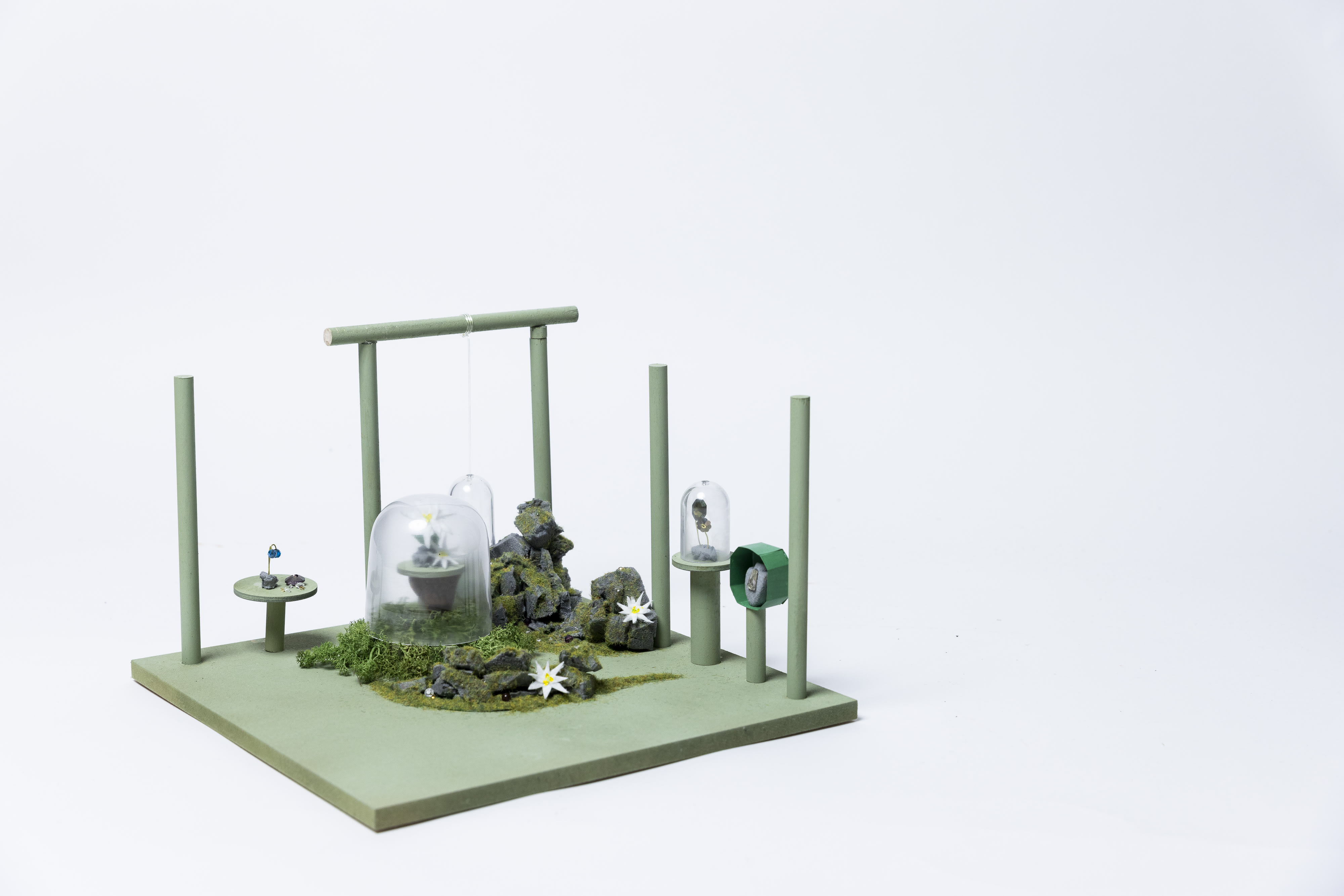
Entangled beings, Swarovski x MA Biodesign
-
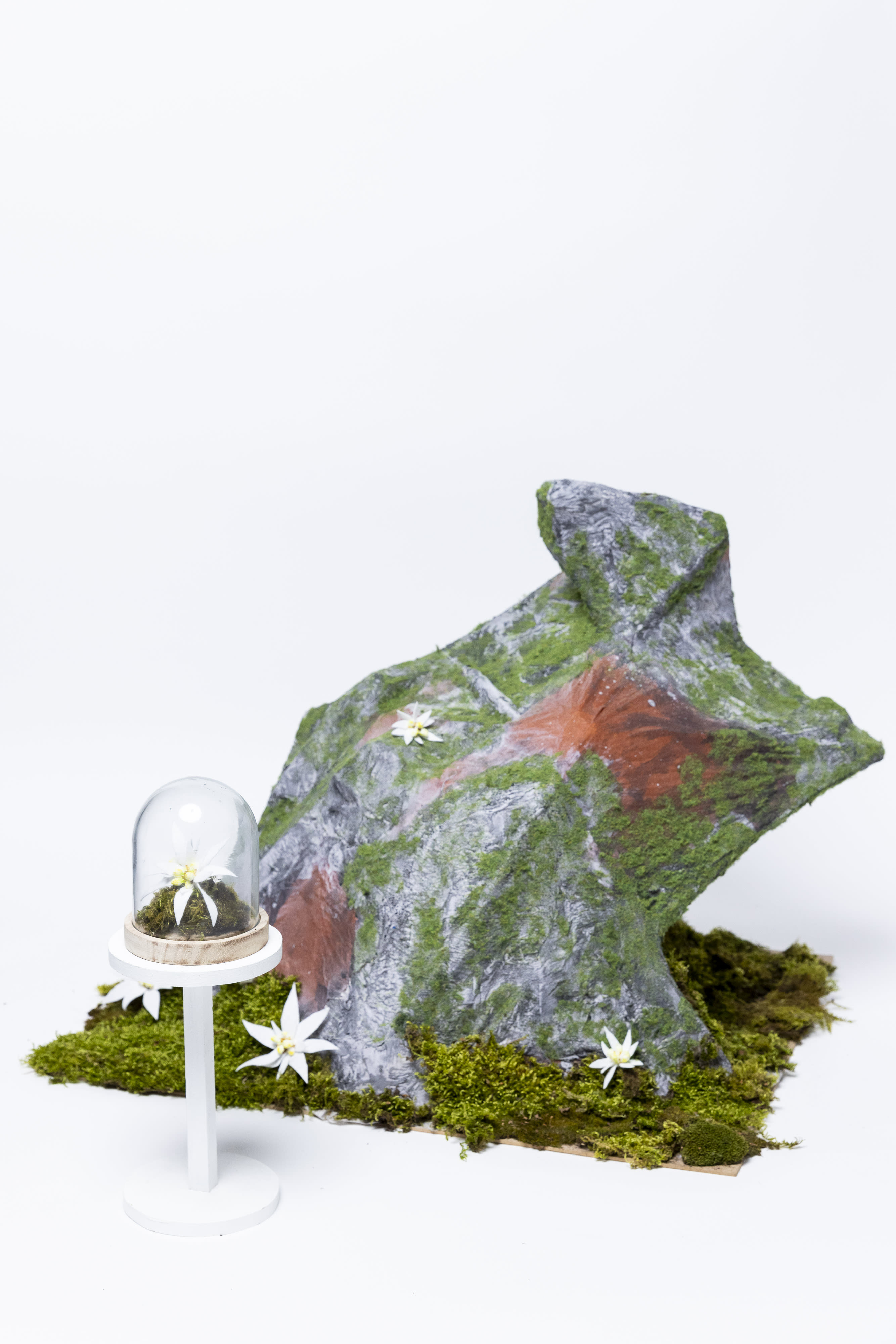
Entangled beings, Swarovski x MA Biodesign
-
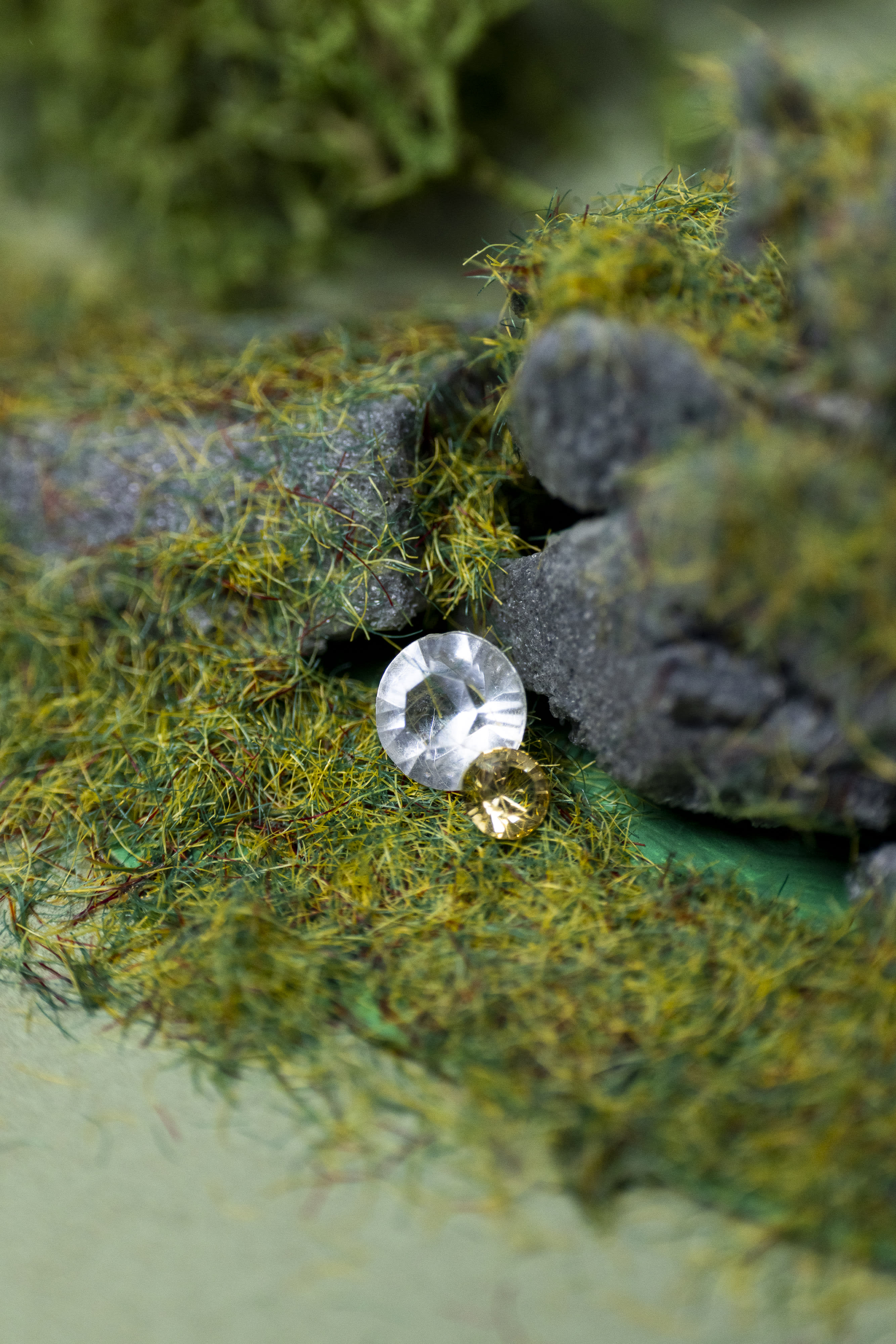
Entangled beings, Swarovski x MA Biodesign
-
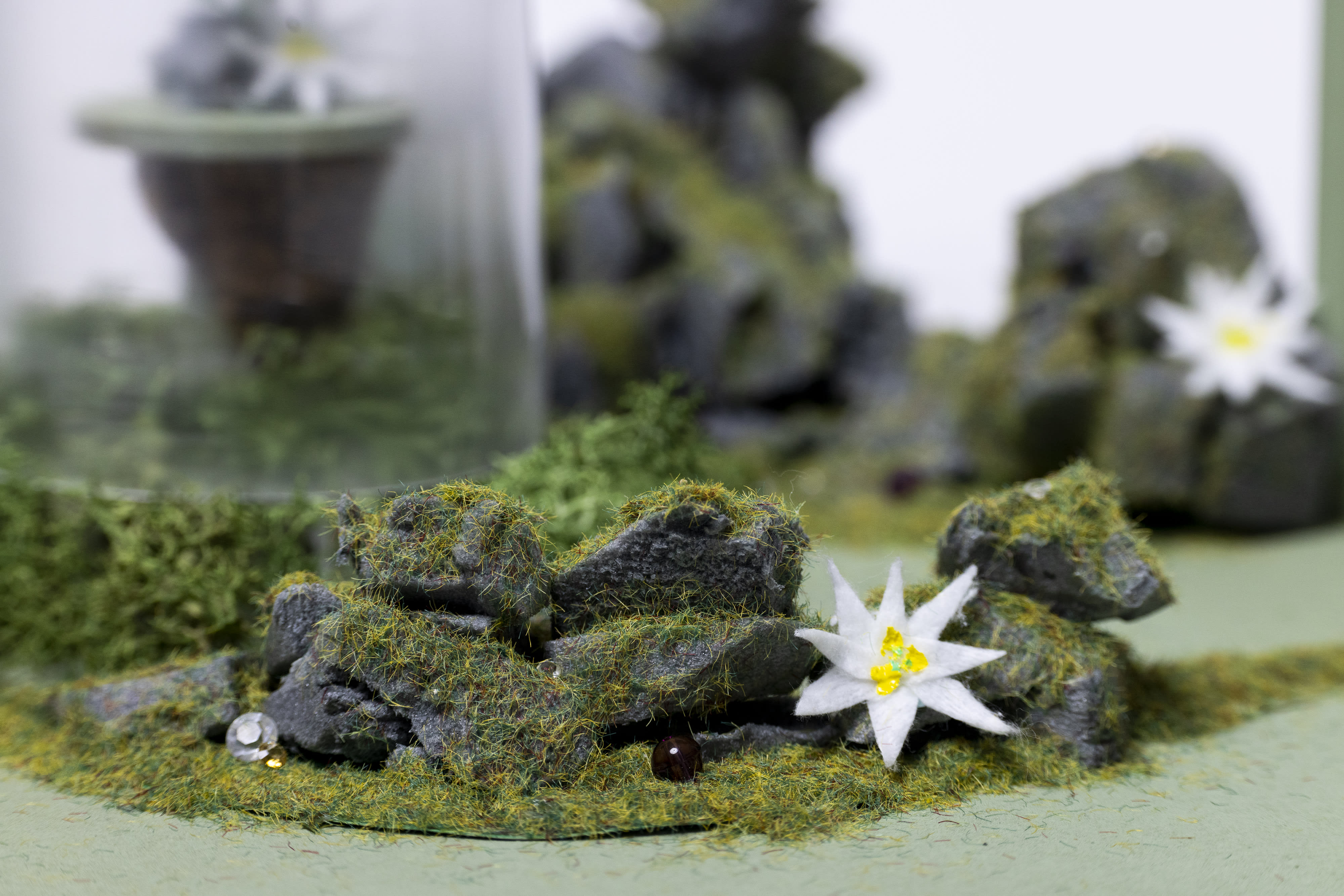
Work for the Swarovski x MA Biodesign project with Central Saint Martins
Swadhesive
Xinruo Hu, Ruixin Zhang, Xinyi Bai
A Bio-Glue innovation
'Swadhesive' looked at ways in which 'bio-glue' could be used by Swarovski in their packaging bonding, jewelry sets and retail design interiors. The group suggested that the water wastestreams created during Swarovski's crystals polishing processes could be bioremediated and positively repurposed. By using the algae strain Euglena Gracilis, a single-cell organism that thrives under highly acidic conditions and pine resin, the group undertook experiments to create a substance that would be an appropriate replacement for existing adhesives which would also be environmentally friendly.
-
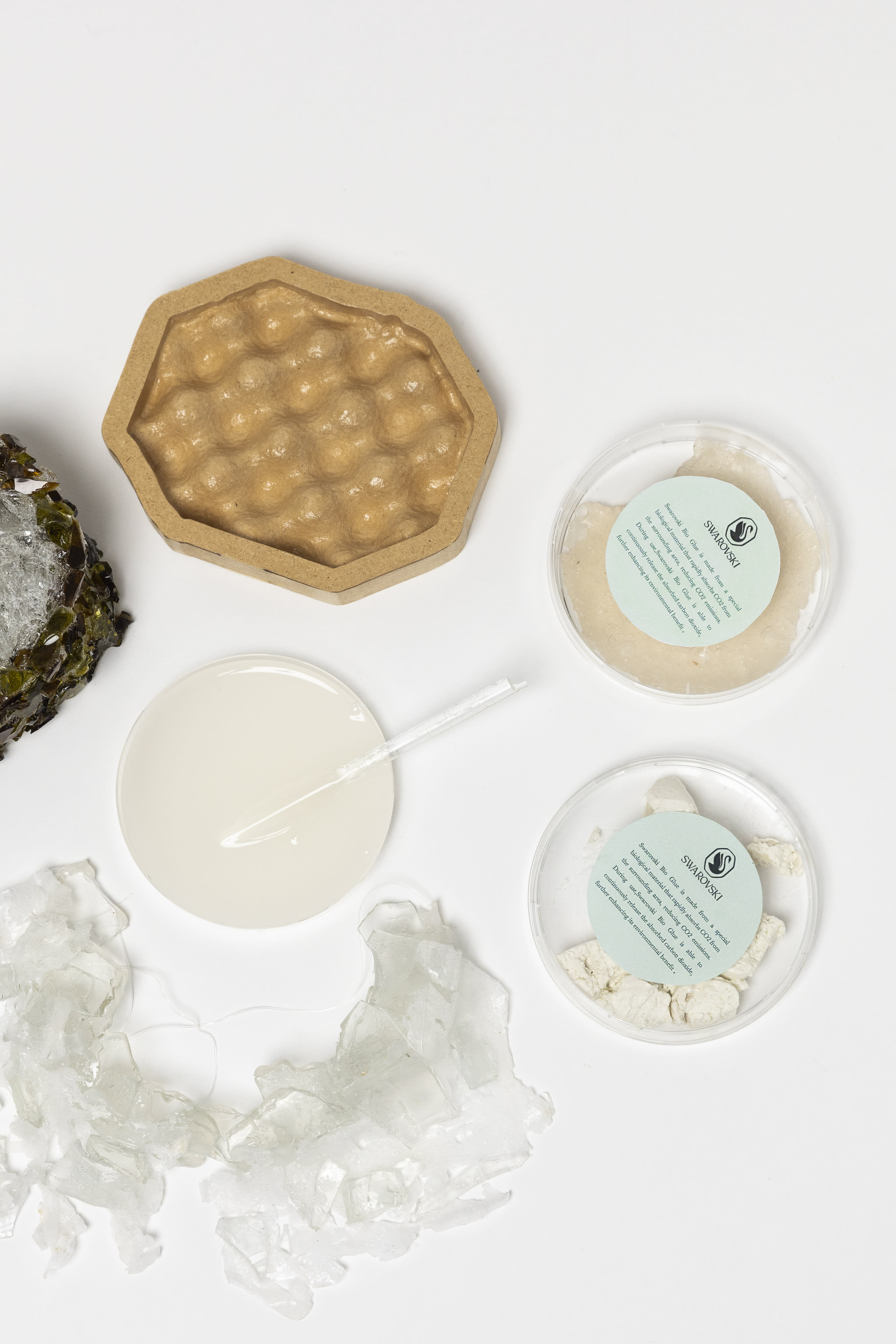
Swadhesive, Swarovski x MA Biodesign
-
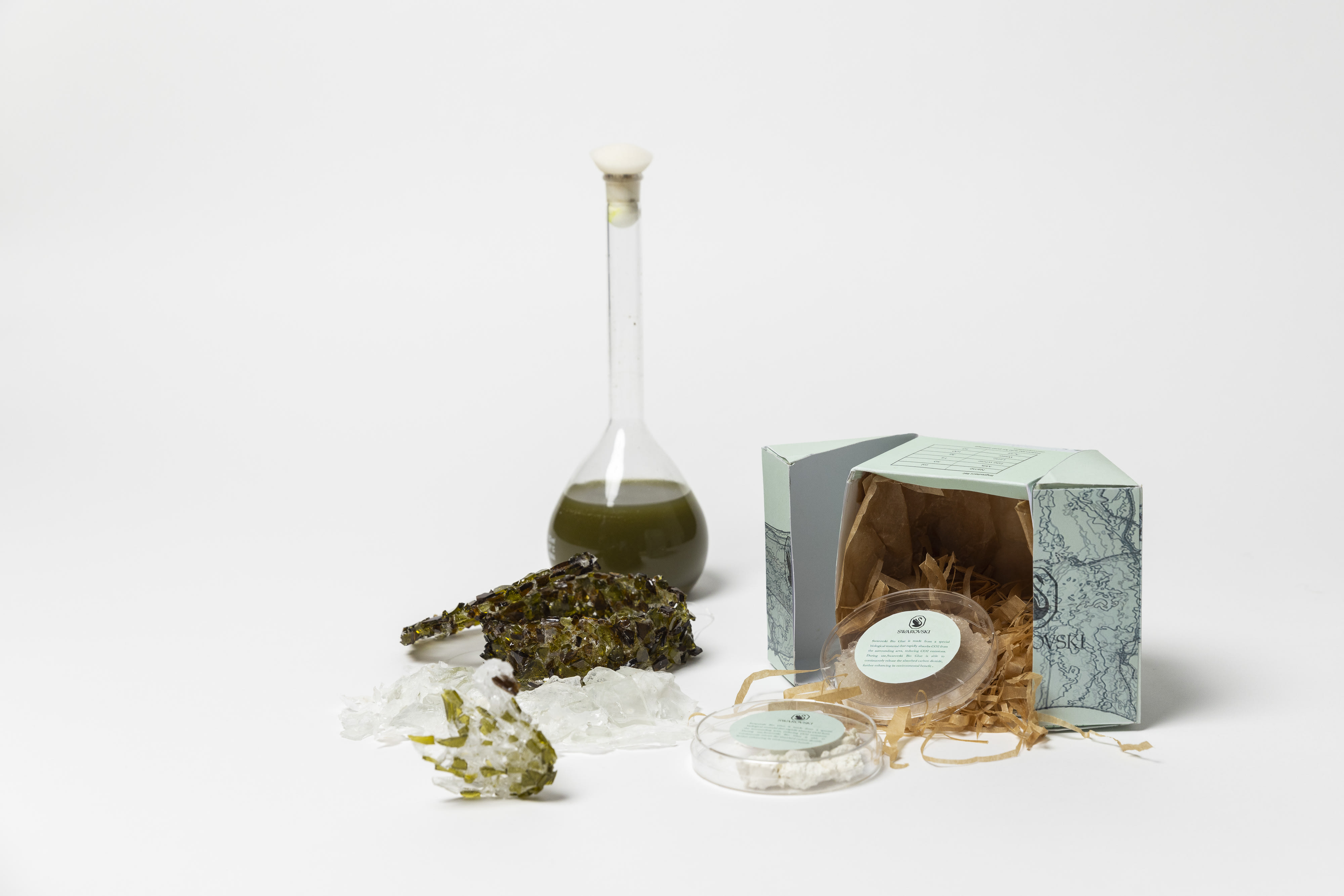
Work for the Swarovski x MA Biodesign project with Central Saint Martins
-
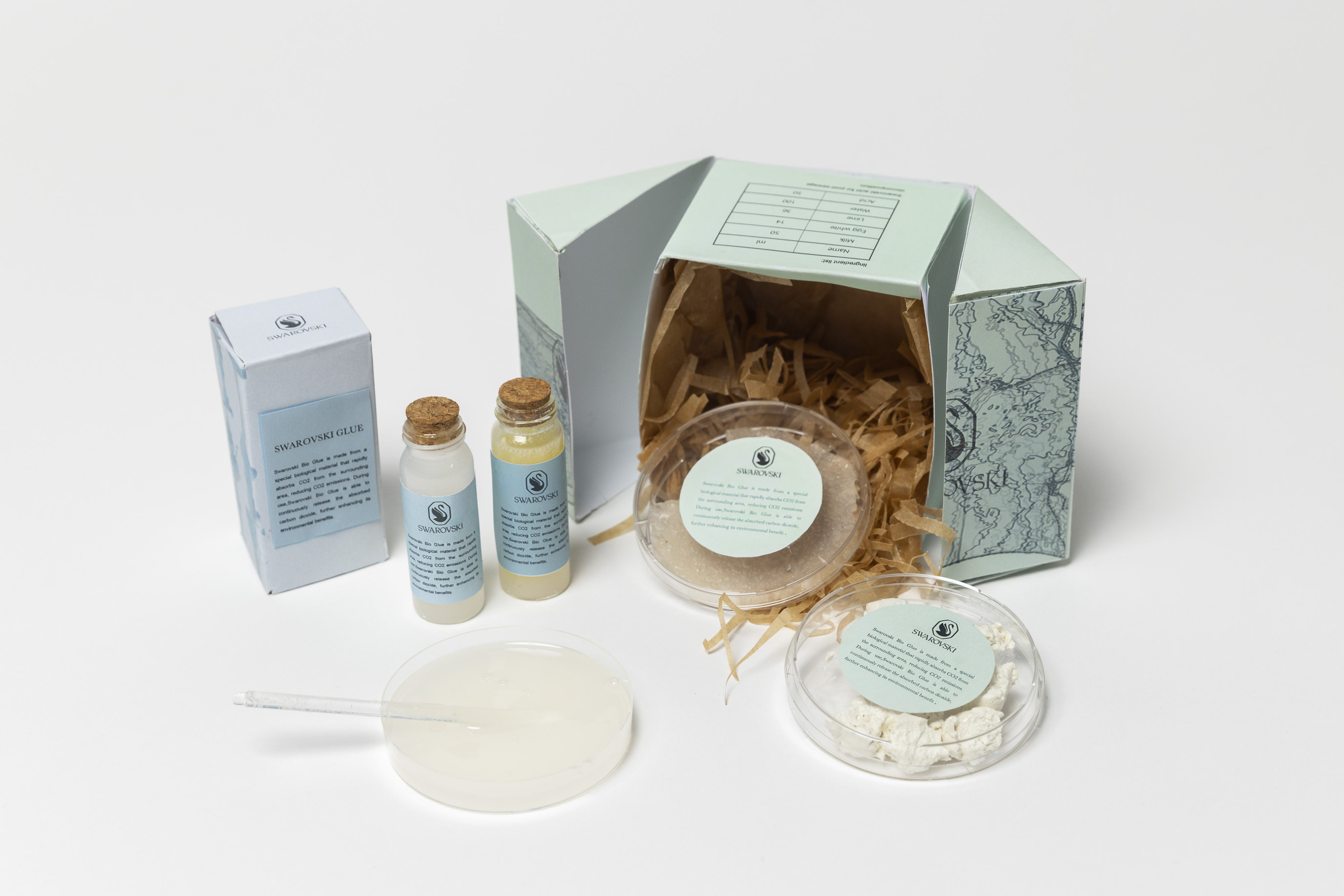
Work for the Swarovski x MA Biodesign project with Central Saint Martins
-
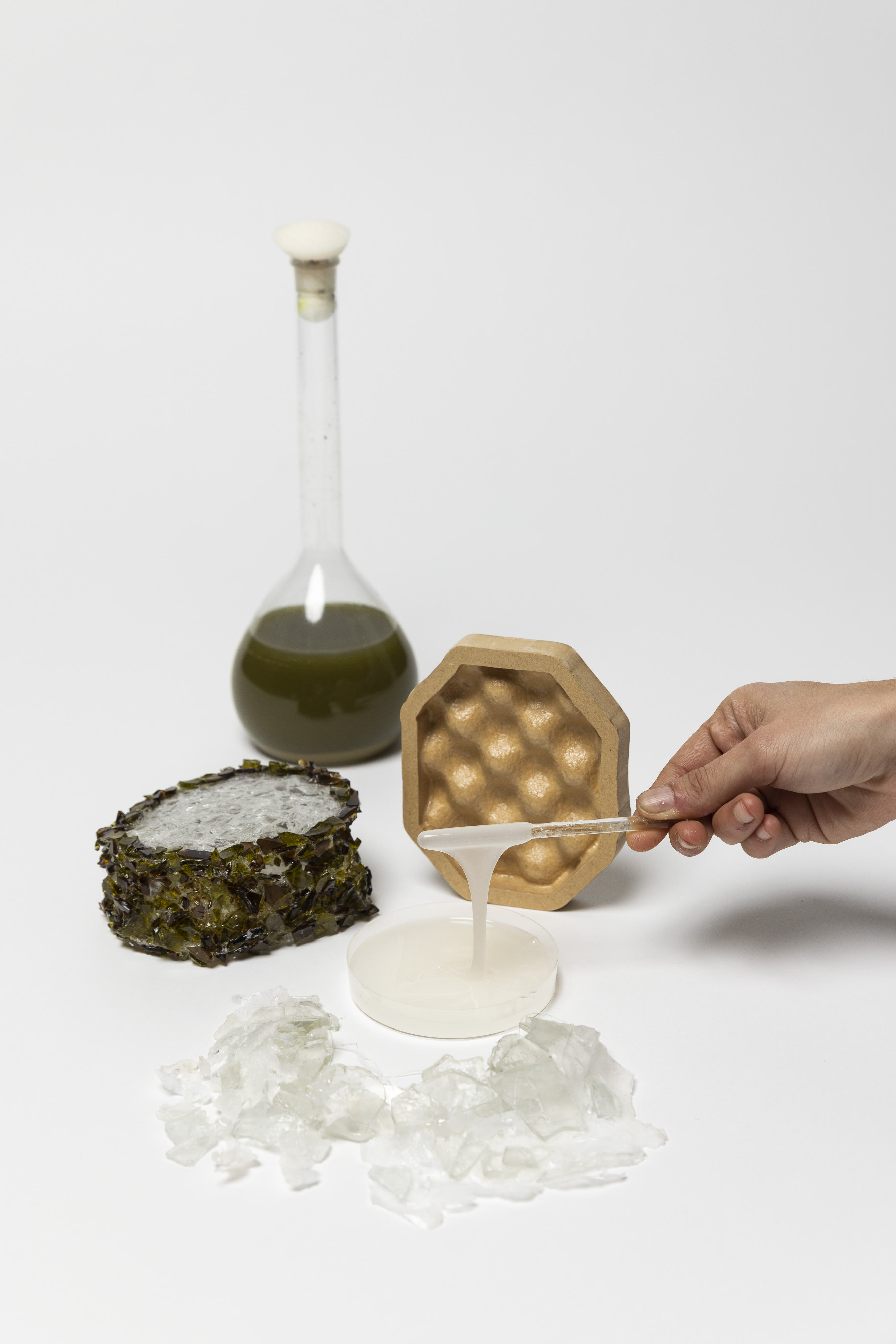
Work for the Swarovski x MA Biodesign project with Central Saint Martins
Alps wonderland
Beibei Tang, Shijia Huang, Wenjie Chen
Bringing living organisms into the crystal colouration process.
The group took climate change in the Alps as their starting point. As rising global temperatures result in less snow coverage on mountains, increasing amounts of plant life begins to grow. These greener mountains reflect less sunlight which leads to further shrinkage of snow cover.
'Alps wonderland' takes the Austrian Alps, the birthplace of Swarovski, as inspiration for a collection of rings. Bacterial grown liquid dyes are encased in 3D printed glass and represent the shape of mountains. The group experimented with cellulose extracted from agriculture waste pineapple fibers to explore different materials that could be used products and packaging, and proposed an interactive customer experience in-store in the form of a 'Swarovski Bio Lab' where colours could be customised using the biomaterials.
-
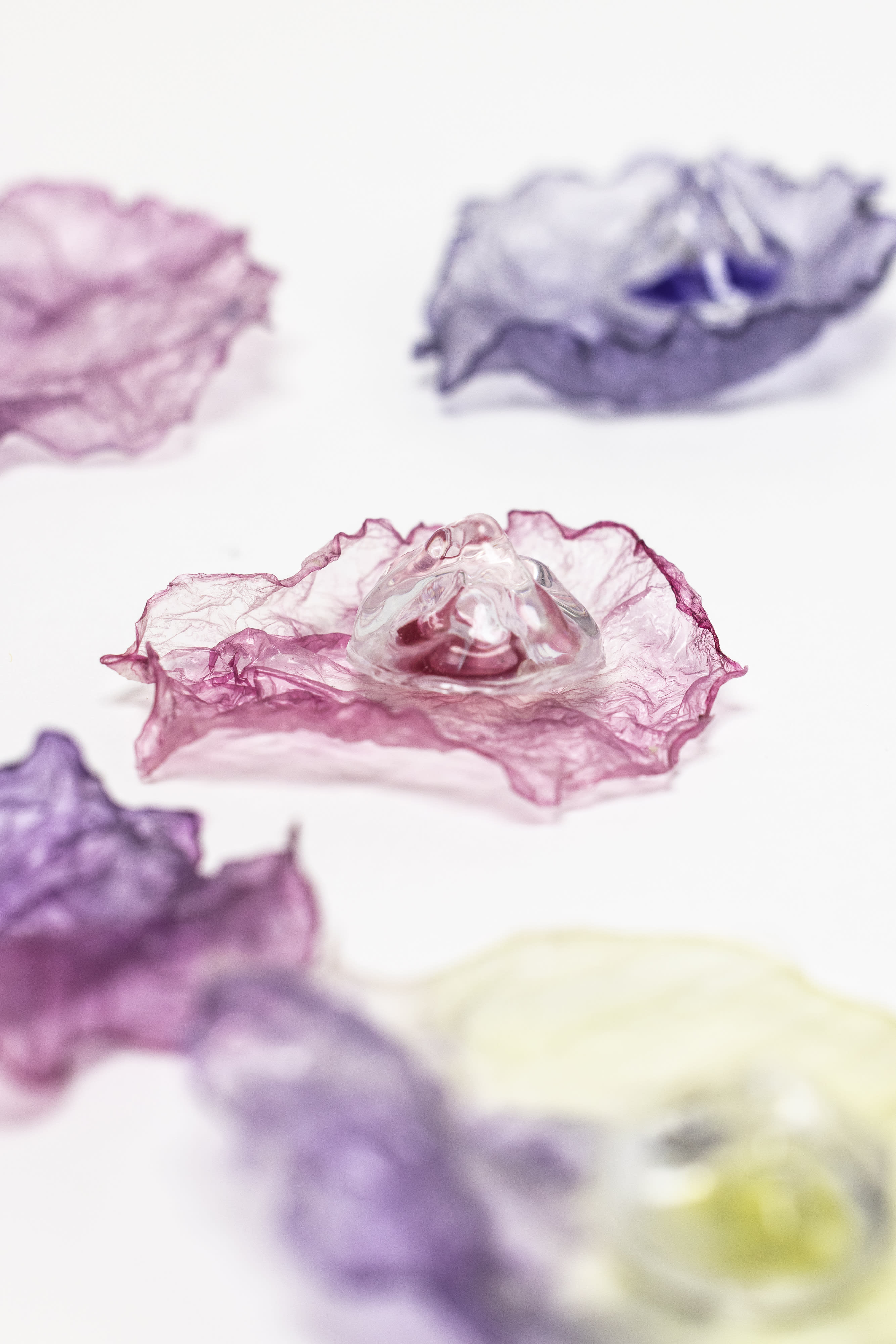
Alps wonderland, Swarovski x MA Biodesign
-
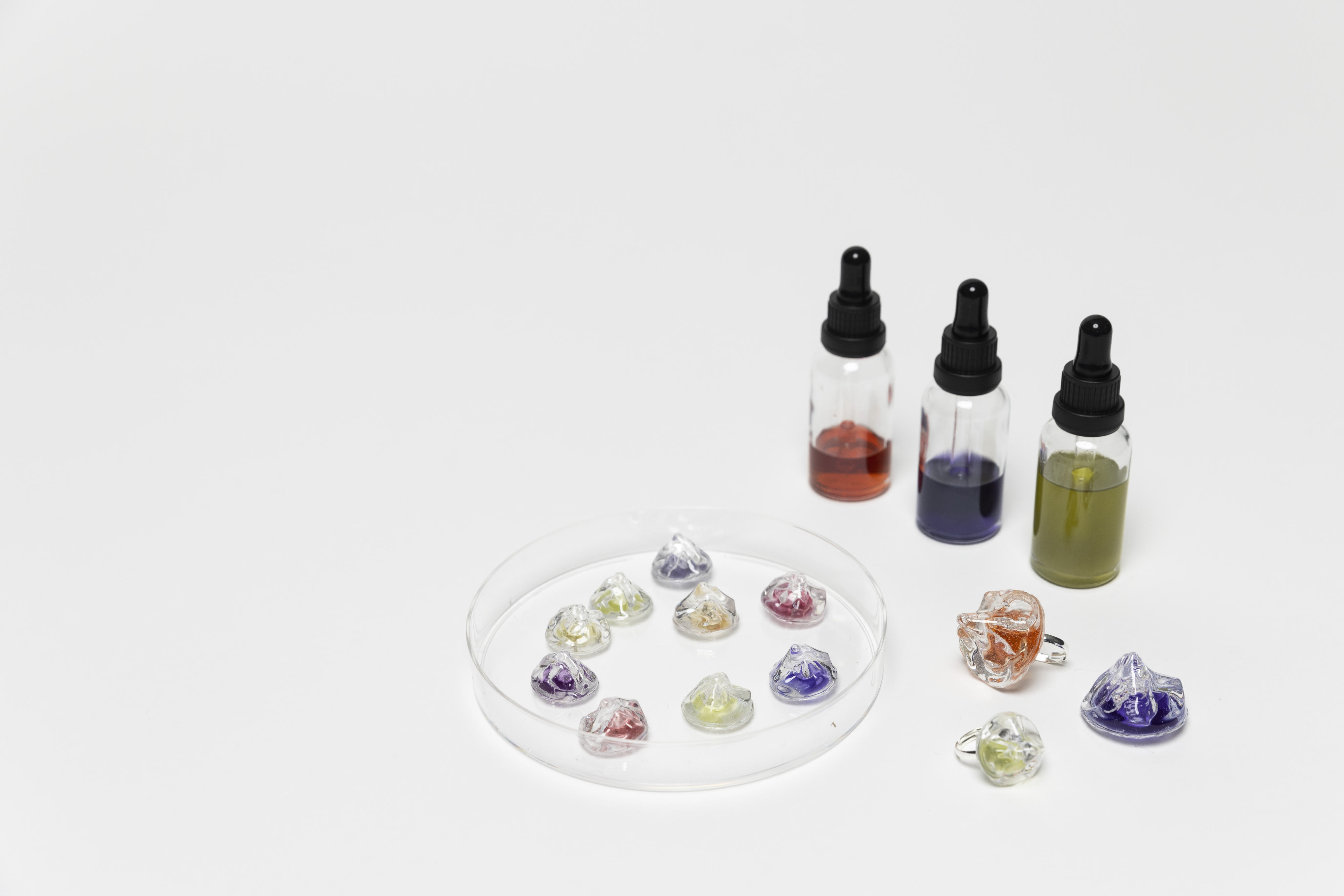
Alps wonderland, Swarovski x MA Biodesign
-
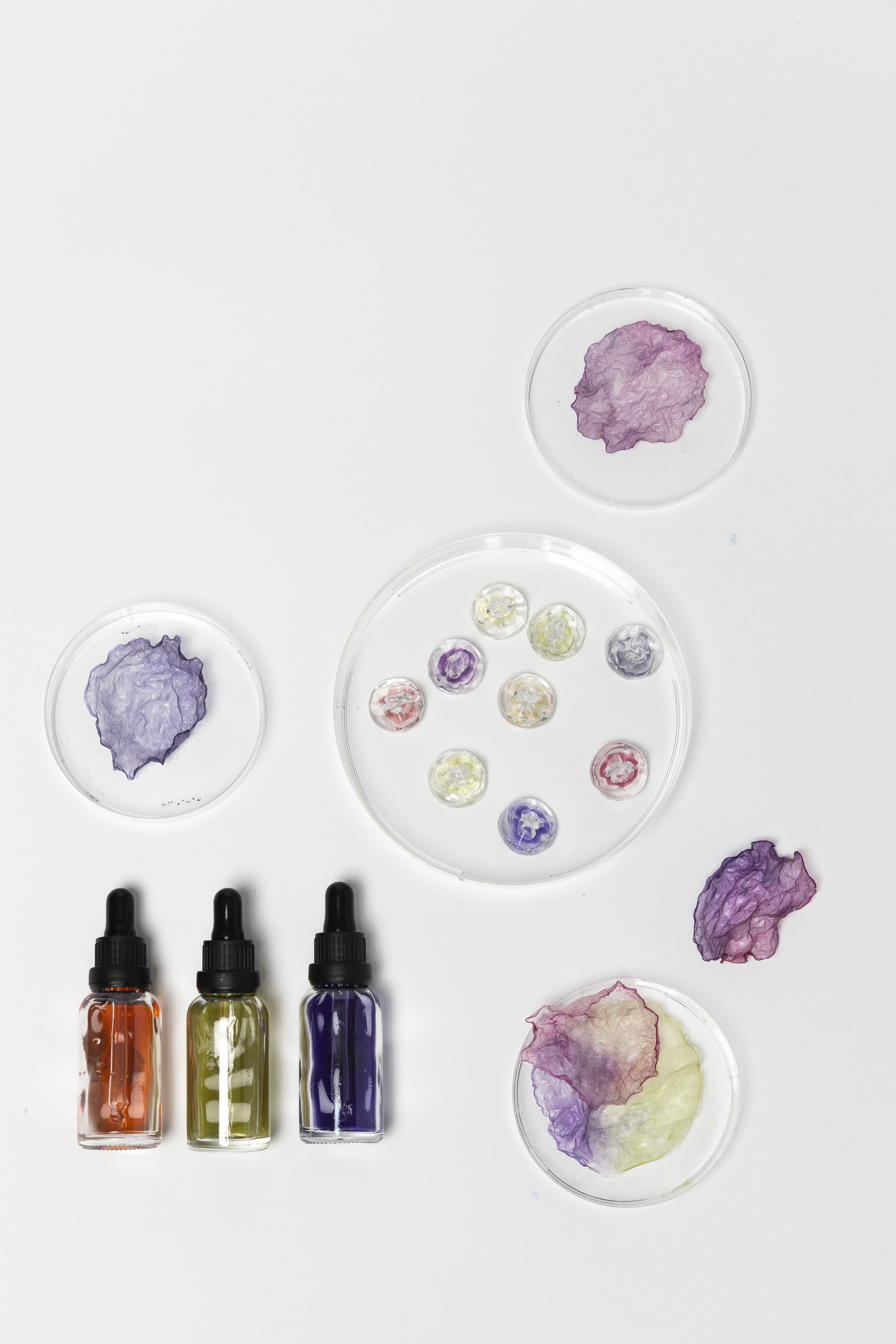
Alps wonderland, Swarovski x MA Biodesign
-
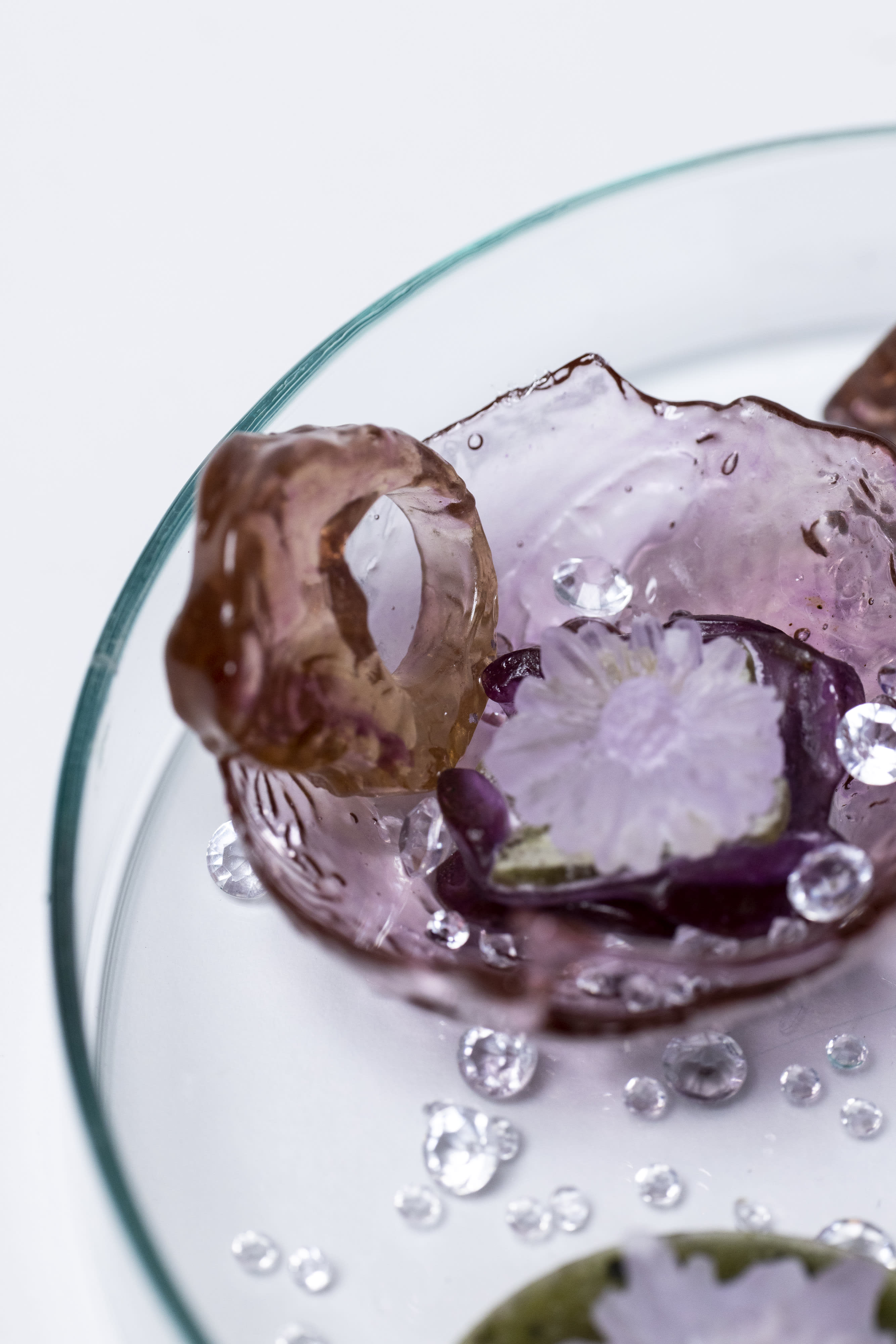
Work for the Swarovski x MA Biodesign project with Central Saint Martins
Discover more
-

Malu Luecking, MA Biodesign
-
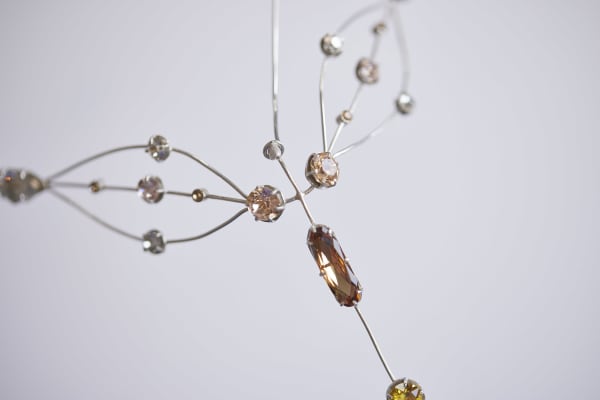
The Frontier of Piece, Zoe Zhang BA Jewellery
-
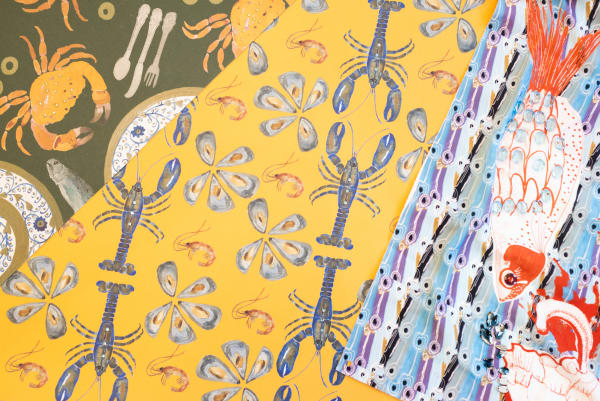
Sissel Gustavsen, BA Textiles, Precious Fish. Image: Swarovski and Anja Riedmann